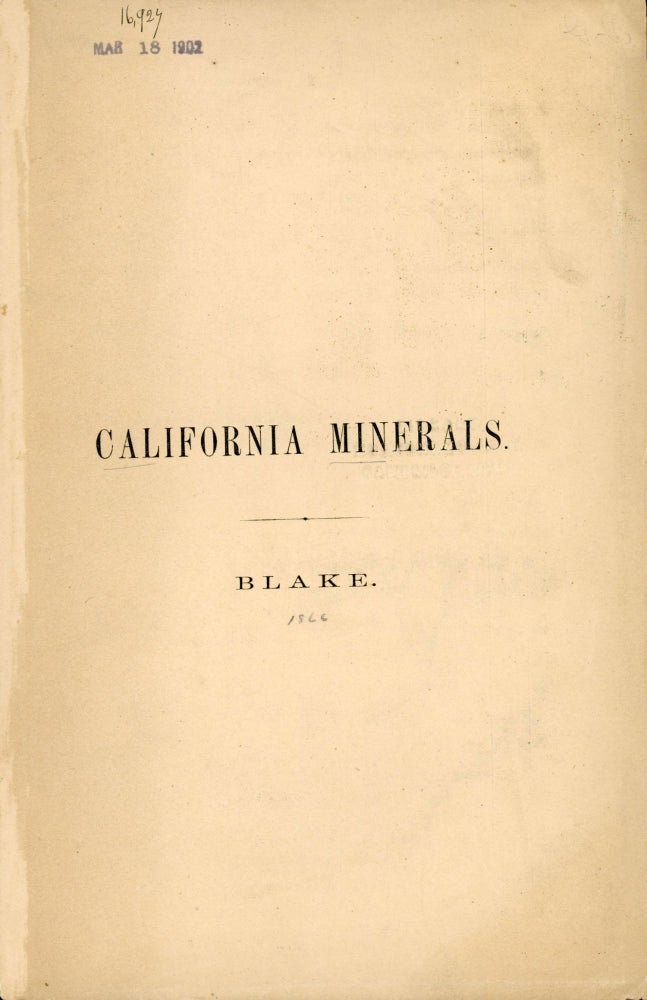ANNOTATED CATALOGUE OF THE PRINCIPAL MINERAL SPECIES HITHERTO RECOGNIZED IN CALIFORNIA, AND THE ADJOINING STATES AND TERRITORIES; BEING A REPORT TO THE CALIFORNIA STATE BOARD OF AGRICULTURE, by William P. Blake ... MARCH, 1866. Sacramento: Printed for the Author, 1866. 24.2x15.8 cm (octavo), pp. [1-5] 6 [7] 8-31 [32], original tan wrappers printed in black, untrimmed, sewn. First edition. William Phipps Blake (1826-1910), American geologist, mining consultant and educator, was the mineralogist and geologist with the Pacific Railroad Survey (1853–1856) that identified the San Gorgonio Pass in Southern California as the best railroad route to the coast (the route used by the Southern Pacific railroad twenty-four years later). While exploring the route Blake observed and detailed a theory on erosion by wind-blown sand on the geologic formations of southern California. Biographer David B. Dill, Jr. calls the exploration of the pass one of Blake's "crowning events" in a "long professional career rich in scientific and human values." Besides identifying geologic features along the route and exploring the mining fields of California, he was the author of several important Railroad Survey reports. He started several western mining enterprises that were premature, including a mining magazine in the 1850s and the first school of mines in the Far West in 1864. From the 1850s on he published over 200 articles, several books, and numerous newspaper and mining magazine columns or short pieces on mining and geology. He served throughout his long career as a mining consultant for mining corporations in every western state and several foreign countries, including Japan. He also served as special ambassador for the nascent science of geology while serving as the United States' principal geologic exhibit commissioner for what now would be called World Fairs, from Paris in 1867, through Vienna and the centennial at Philadelphia, back to Paris in 1878. He ended his long and distinguished career as head of the school of mines at the University of Arizona, 1895–1905, remaining in an active emeritus status until his death in 1910 (note based on Wikipedia entry). Cowan (1933), p. 56. Sabin 5801. Old perforated stamp and accession date stamp on front wrapper. Some wear along spine panel, wrappers dusty, a very good copy. (#168501).
Price: $375.00
No statement of printing.


